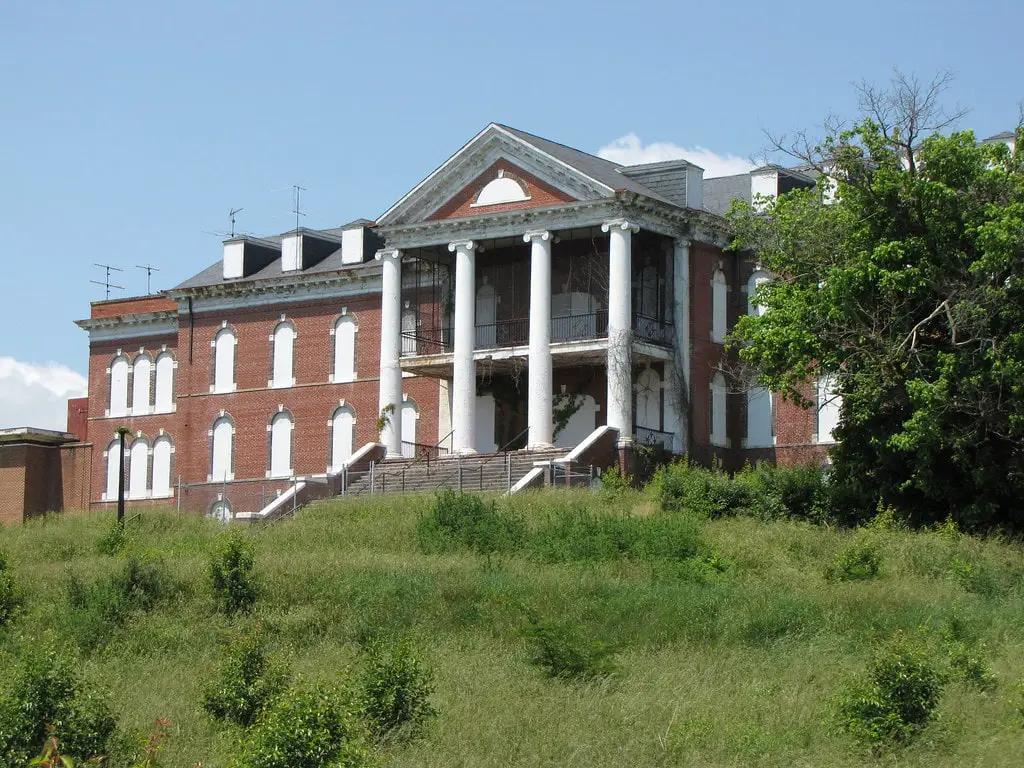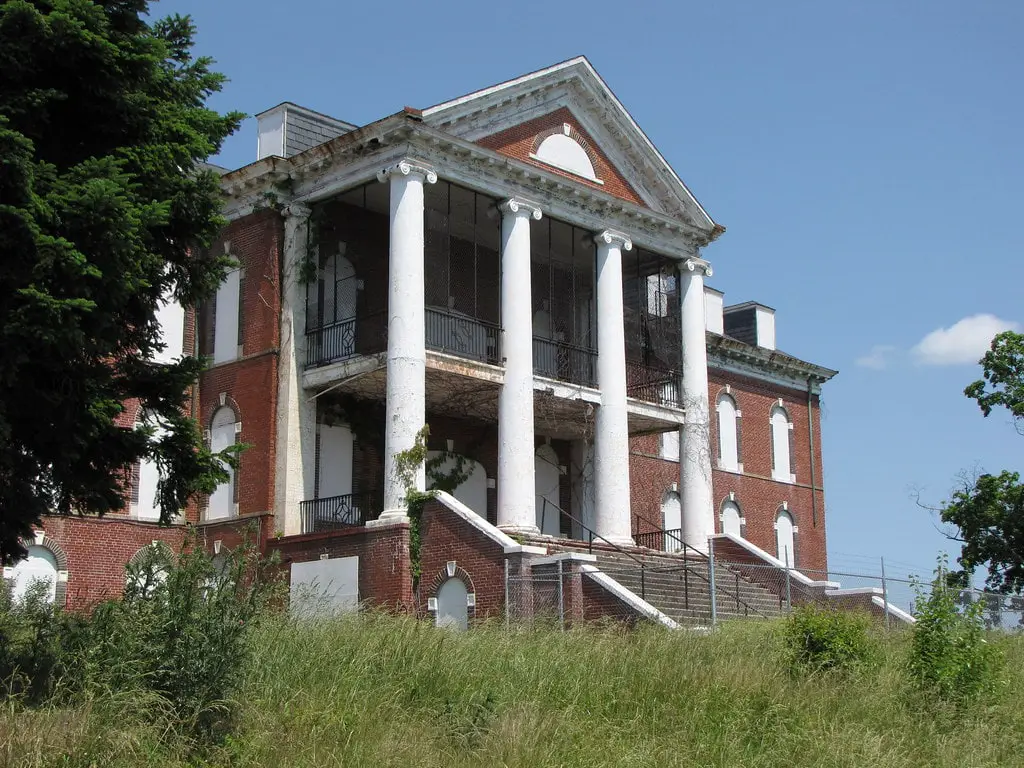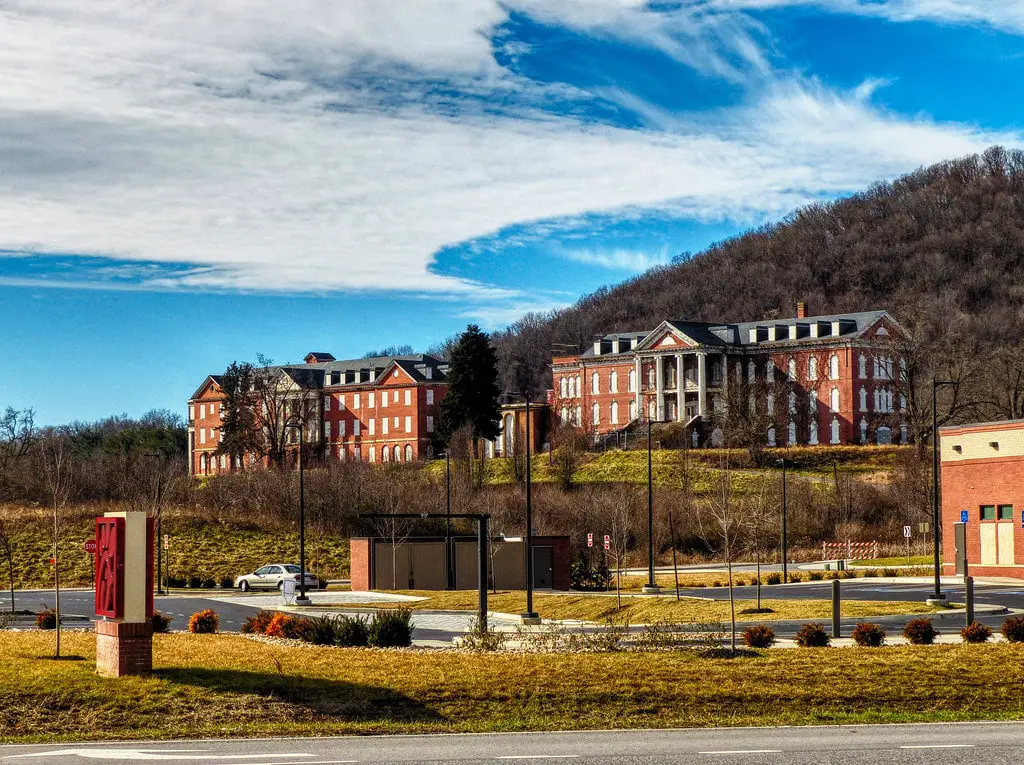A Chilling Reminder of a Dark Past
Nestled on a hill in Staunton, Virginia, the abandoned DeJarnette Sanitarium is a haunting reminder of America’s dark past.
Once a thriving mental hospital, the crumbling building now stands empty and deteriorating, surrounded by modern structures that only accentuate its eerie presence.
The Beginning: A Eugenicist’s Vision
Established in 1932 by Dr. Joseph DeJarnette, the DeJarnette Sanitarium initially functioned as a private facility catering to middle-income patients, operating independently from the state-funded Western State Hospital.
Dr. DeJarnette was a well-regarded physician among the white Virginia elite during that era.
Nonetheless, his career was primarily characterized by his vigorous advocacy for eugenics, particularly the forced sterilization of individuals with mental illnesses and others he considered “defective.”
DeJarnette’s Controversial Beliefs
DeJarnette believed that sterilization was the only way to preserve society’s integrity.
Despite being part of a larger movement toward more humane mental health treatment, he was unyielding on this point.
His passion for eugenics even led him to write a poem extolling the virtues of proper human breeding, earning him the nickname “Sterilization DeJarnette.”
| Timeline of DeJarnette Sanitarium Events |
|---|
| 1932 – DeJarnette Sanitarium founded |
| 1975 – Taken over by the state and transformed into a children’s hospital |
| 1996 – Center relocated to a new facility |
| 2001 – Renamed Commonwealth Center for Children and Adolescents |
DeJarnette’s enthusiasm for forced sterilization saw Virginia’s legislature become a model for similar laws in at least 12 other states.
Legally performing hundreds of forced sterilizations at Western State Hospital, DeJarnette’s victims included people with mental disabilities, epilepsy, alcoholics, and those deemed promiscuous.
A large percentage were poor and African-American or Native American.
A Shift in Attitudes and the Fall of DeJarnette’s Legacy
Following the Holocaust, public opinion on eugenics in the United States shifted dramatically.
Denounced as an inhumane pseudoscience, DeJarnette’s reputation was irreparably tarnished.
However, the practice of forced sterilization persisted in Virginia until the 1970s.
In 1975, the DeJarnette Sanitarium became state property, and a children’s hospital was established called the DeJarnette Center for Human Development.
By 1996, the center had relocated to a new site close to the Western State Hospital, and the original DeJarnette Sanitarium was permanently shut down.
A New Beginning and Apologies
In 2001, the relocated center was renamed the Commonwealth Center for Children and Adolescents to distance itself from DeJarnette’s association with eugenics.
The state of Virginia has since publicly apologized for the sterilization program and offered reparations to its victims.
Today, the abandoned DeJarnette Sanitarium is a chilling monument to a dark chapter in history.
Though various plans for its demolition and redevelopment have been proposed, none have come to fruition, leaving the building to serve as a constant reminder of the horrors that once took place within its walls.

The Architecture of DeJarnette Sanitarium: A Reflection of Its Time
As you approach the abandoned DeJarnette Sanitarium, its architecture immediately draws your attention.
Built in the 1930s, the building’s design reflects the period’s medical architecture.
The sanitarium’s crumbling facade and peeling paint provide an eerie contrast to the surrounding modern structures, enhancing the site’s mystery and history.
The building’s layout was designed to provide ample light and air circulation, with large windows and spacious rooms considered essential for patients’ well-being.
Despite the sinister activities within its walls, the sanitarium was initially constructed to promote healing and recovery.
| Architectural Features of DeJarnette Sanitarium |
|---|
| Built in the 1930s |
| Designed for optimal light and air circulation |
| Large windows and spacious rooms |
| Architecture reflective of the period’s medical facilities |

Though time has taken its toll on the structure, it remains an essential piece of architectural history that tells the story of the ever-evolving field of mental health care in the United States.
Urban Exploration and Ghostly Encounters: A Modern Fascination
The deserted DeJarnette Sanitarium has recently gained popularity as a go-to spot for urban explorers, photographers, and those interested in paranormal activities.
Drawn to the site’s chilling history and haunting atmosphere, visitors often venture into the dilapidated building to document its decay, capture eerie photographs, or search for evidence of paranormal activity.
Many explorers have reported strange occurrences, such as unexplained sounds, mysterious shadows, and a pervasive sense of unease.
Some claim to have witnessed apparitions or experienced inexplicable events, attributing these phenomena to the spirits of those who suffered within the sanitarium’s walls.

Urban Exploration at DeJarnette Sanitarium
- A popular destination for urban explorers and paranormal enthusiasts.
- Visitors document decay, capture eerie photographs and search for paranormal activity.
- Reports of unexplained sounds, mysterious shadows, and apparitions.
While it’s unclear whether these ghostly encounters are the products of active imaginations or genuine paranormal activity, the abandoned DeJarnette Sanitarium continues to captivate the curiosity of those who seek to uncover its secrets and remember the tragic stories of its past.

In the late fifties, I remember that Dejarnettes was where the wealthy prominent people of the area went to dry out
Also do you have information on what we called “the poor house” located on Rockfish Rd in Staunton?
Thank you for sharing your memories of the DeJarnette Sanitarium and its role in the 1950s. As for the “poor house” on Rockfish Rd, I regret that I don’t currently have enough information to compose an article about it.
When I was in school in the 90s they sent the trouble maker students here. They would flip out if they had to go back a second time
Thank you for sharing your experience! It’s fascinating to learn how the DeJarnette Sanitarium was utilized during that time. It must have been quite an effective deterrent for misbehaving students.
😊
Remember that “none’ is a singular word. Always a teacher.
I’ll try to argue against it. In the sentence “Though various plans for its demolition and redevelopment have been proposed, none have come to fruition,” the auxiliary verb “to have” is appropriate.
The sentence’s subject, “various plans,” is plural in nature, signifying multiple instances of proposed demolition and redevelopment schemes. Therefore, the subject-verb agreement requires using “have” when referring to a plural subject. Conversely, “has” would be employed if the subject were singular.
#Facts
I was a patient there in 1986 for a month. I hated it… however I found that the staff all were nice enough. they did keep a lot of the patients medicated so they were out of it a lot. It was a difficult time in my life at 16…wouldn’t wish it on anyone. Glad mental health practices have changed!
Thank you for sharing your personal experience as a patient at DeJarnette Sanitarium in 1986. I’m glad the staff were kind during your stay, as compassionate care is essential in mental health settings. Your reply adds a valuable layer to the overall narrative about the sanitarium.